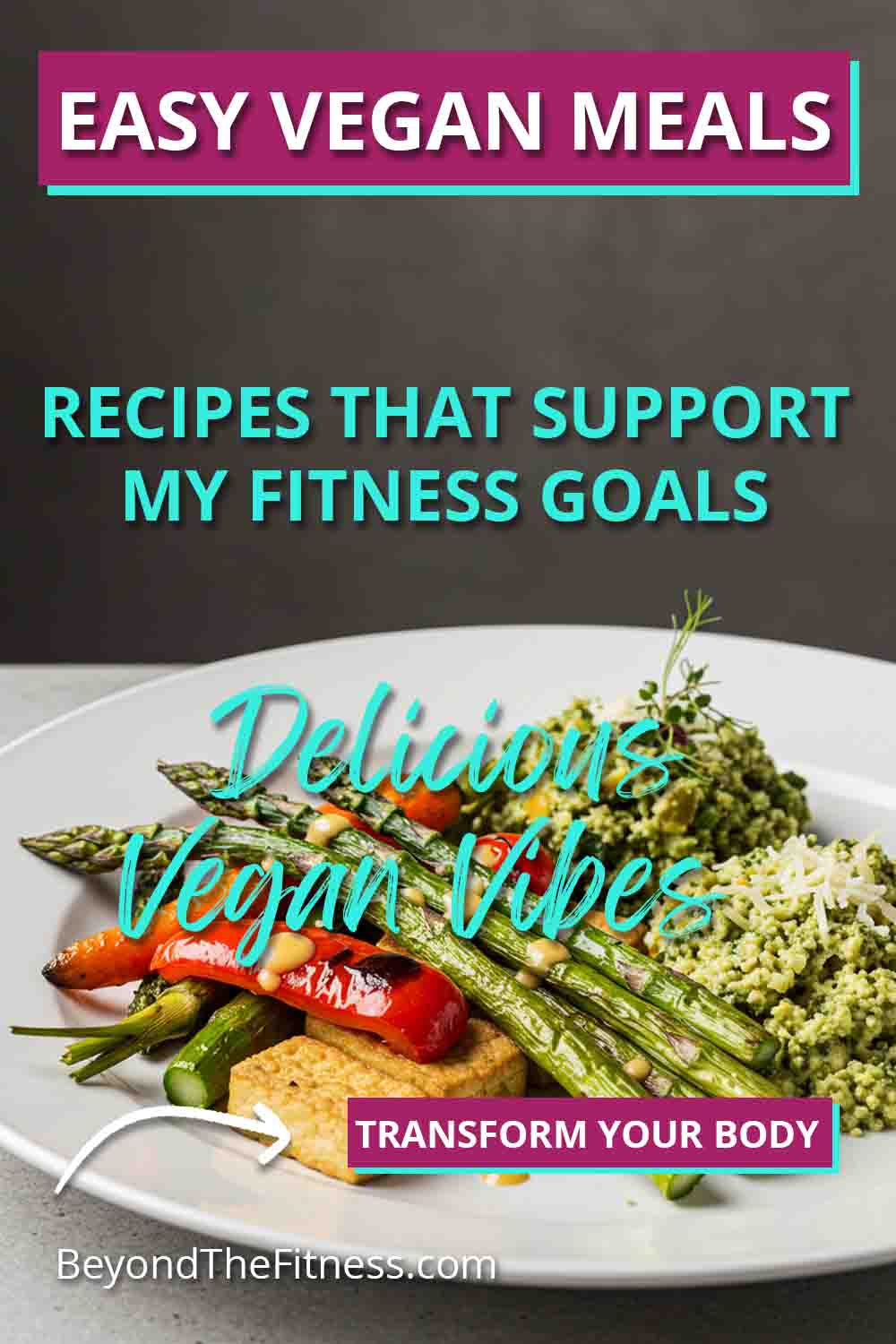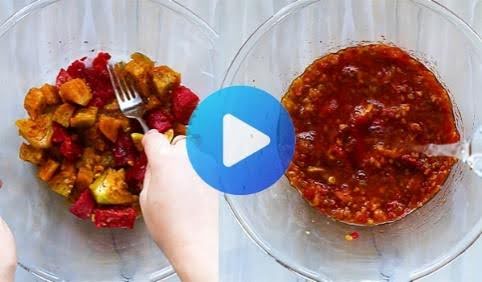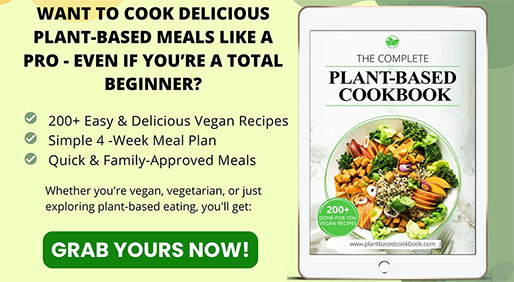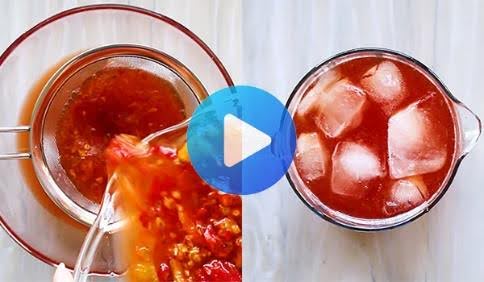Eating vegan means choosing foods that come only from plants. No meat, chicken, fish, dairy milk, cheese, or eggs. It might sound tricky at first, but I promise it can be super easy and incredibly tasty. As someone who helps people, especially women, find healthy ways to eat and manage their weight, I’ve seen how wonderful a plant-based approach can be. It’s not just about what you don’t eat; it’s about all the amazing foods you do get to enjoy. Think colorful fruits, hearty vegetables, filling beans, and satisfying grains.
Making the switch or just adding more plant-based meals to your week doesn’t have to be complicated. My goal here is to show you simple ways to make delicious vegan food part of your everyday life. Whether you’re thinking about going fully vegan or just want some new, healthy meal ideas, this guide is for you. We’ll cover everything from stocking your kitchen to whipping up quick breakfasts, lunches, dinners, and even snacks.
Insider Tip: Enjoying Healthy and Flavorful Plant-Based Dishes with The Complete Plant Based Recipe Cookbook
Why Choose More Plant Foods?
People choose to eat more plants for lots of reasons. For many women I work with, health is a big one. Eating lots of fruits, vegetables, whole grains, and legumes can be great for your heart. It can help manage weight in a healthy way because plant foods are often packed with fiber, which helps you feel full and satisfied. Fiber is also wonderful for digestion.
Eating plant-based can also give you lots of energy. When you fuel your body with nutrient-rich foods, you often feel lighter and more vibrant. Plus, getting a wide variety of vitamins and minerals from plants supports overall well-being, including things like skin health and stable energy levels throughout the day. Some also choose it because they care about animals or the environment. Whatever your reason, focusing on plant foods can be a positive step.
Stocking Your Vegan Kitchen: The Basics
Having the right ingredients on hand makes cooking so much easier. You don’t need a ton of fancy stuff. Here are some staples I always recommend keeping in your pantry and fridge:
Pantry Powerhouses
- Grains: Brown rice, quinoa, oats (rolled oats are super versatile), whole wheat pasta, couscous. These are great bases for meals and provide steady energy. Quinoa is cool because it cooks fast and has protein. Oats are perfect for breakfast or even adding to smoothies.
- Legumes (Beans and Lentils): Canned or dried chickpeas, black beans, kidney beans, pinto beans, lentils (red, green, brown). These are amazing sources of protein and fiber. Canned beans are super convenient – just rinse and go. Dried lentils cook pretty quickly, especially red ones.
- Nuts and Seeds: Almonds, walnuts, cashews, chia seeds, flax seeds, pumpkin seeds, sunflower seeds. Great for snacks, adding crunch to salads, or blending into sauces. Chia and flax seeds are awesome for adding healthy fats and fiber; you can put them in oatmeal or smoothies. Cashews, when soaked, can make creamy sauces.
- Canned Goods: Diced tomatoes, tomato paste, coconut milk (full-fat and light), vegetable broth. These are lifesavers for making quick sauces, soups, and curries.
- Spices and Seasonings: This is where the flavor happens. Get basics like salt, pepper, garlic powder, onion powder, cumin, chili powder, smoked paprika, dried oregano, and nutritional yeast (gives a cheesy flavor). Don’t forget soy sauce (or tamari for gluten-free), vinegar (apple cider, balsamic), and maybe some maple syrup for a touch of sweetness.
- Oils: Olive oil for dressings and light cooking, a neutral oil like canola or avocado oil for higher heat cooking.
Fridge Friends
- Tofu and Tempeh: Excellent sources of plant-based protein. Tofu takes on the flavor of whatever you cook it with. Tempeh has a nuttier taste and firmer texture. Look for firm or extra-firm tofu for most recipes unless you’re making a creamy sauce or scramble.
- Plant-Based Milk: Almond, soy, oat, cashew milk – there are so many options. Use them for cereal, smoothies, coffee, or in recipes. Unsweetened versions are usually best for cooking.
- Fresh Produce: Lots of fruits and vegetables. Think leafy greens (spinach, kale), onions, garlic, carrots, broccoli, bell peppers, sweet potatoes, bananas, berries, apples. Buy what’s in season for the best flavor and price. Frozen fruits and veggies are great too, just as nutritious and sometimes more convenient.
- Condiments: Hummus, salsa, mustard, vegan mayo, hot sauce. These add instant flavor to sandwiches, wraps, and bowls.
Having these items means you can always throw together a simple, healthy meal without much fuss.
Easy Vegan Breakfast Ideas to Start Your Day Right
Breakfast sets the tone for the day. You want something that gives you energy and keeps you full until lunch. Luckily, vegan breakfasts can be quick and delicious.
- Overnight Oats: This is my go-to for busy mornings. Combine rolled oats, plant milk, chia seeds, and a touch of maple syrup in a jar. Shake it up and leave it in the fridge overnight. In the morning, top with berries, sliced banana, nuts, or seeds. It takes maybe 5 minutes to prep the night before. You get fiber, protein, and healthy fats all in one.
- Super Smoothies: Blend plant milk, a banana (frozen works great for creaminess), a handful of spinach (you won’t taste it, I promise), a scoop of plant-based protein powder (optional), and some flax or chia seeds. You can add other fruits like berries or mango, or even a spoonful of peanut butter. Smoothies are fantastic for getting lots of nutrients in quickly.
- Tofu Scramble: If you miss scrambled eggs, try this. Crumble firm or extra-firm tofu into a pan with a little oil. Add turmeric (for color), black salt (kala namak, for an eggy flavor, but regular salt works too), garlic powder, onion powder, and maybe some nutritional yeast. Sauté with veggies like onions, peppers, spinach, or mushrooms. It’s hearty, protein-packed, and really satisfying. Serve with toast or potatoes.
- Avocado Toast, Elevated: It’s popular for a reason. Mash avocado onto whole-grain toast. Sprinkle with salt, pepper, and maybe some red pepper flakes for a kick. You can top it with sliced tomatoes, chickpeas (mash some in with the avocado), or everything bagel seasoning. It provides healthy fats and fiber.
- Simple Cereal or Granola: Choose a whole-grain cereal or low-sugar granola. Top with plant milk and fresh fruit. Read labels to make sure the cereal doesn’t contain honey or dairy derivatives if you’re strictly vegan.
These breakfasts are designed to be fast. Even the tofu scramble only takes about 10-15 minutes. Starting your day with a balanced, plant-powered meal can make a huge difference in your energy levels and focus.
Simple Vegan Lunch Ideas for Busy Days
Lunch often needs to be portable and quick, especially if you’re packing it for work or school. Leftovers from dinner are always a great option, but here are some other easy ideas:
- Hearty Salad Bowls: Start with a base of greens (spinach, romaine, mixed greens). Add a grain like quinoa or brown rice. Throw in some protein like chickpeas, black beans, baked tofu, or tempeh. Load up on veggies – cucumber, tomatoes, carrots, bell peppers, corn. Add healthy fats like avocado, nuts, or seeds. Top with a simple vinaigrette (olive oil, vinegar, salt, pepper). These are filling and customizable. Pack the dressing separately to avoid soggy greens.
- Veggie Wraps: Spread hummus or vegan cream cheese on a whole-wheat tortilla. Fill with leafy greens, shredded carrots, cucumber slices, bell pepper strips, and maybe some baked tofu or chickpeas. Roll it up tightly. You can make these ahead of time. They are easy to eat on the go.
- Quick Bean Soup: Heat up a can of vegetable broth. Add a can of rinsed beans (like white beans or kidney beans), some canned diced tomatoes, frozen mixed vegetables, and Italian seasoning. Simmer for 10-15 minutes. It’s warm, comforting, and packed with fiber and protein. You can make a big batch and eat it for a couple of days.
- Leftover Remix: Yesterday’s roasted vegetables and quinoa? Toss them with some greens and a lemon-tahini dressing for a quick salad. Leftover chili? Serve it over a baked sweet potato. Get creative with repurposing dinner.
- Hummus and Veggie Plate: Sometimes the simplest lunch is the best. Pack a container of hummus, pita bread or whole-grain crackers, and lots of raw veggies for dipping – carrot sticks, cucumber slices, bell pepper strips, celery sticks, cherry tomatoes. Add some olives or a handful of nuts for extra staying power.
Lunch doesn’t need to be complicated. Focusing on combining protein, fiber, and healthy fats will keep you energized through the afternoon.
Delicious Vegan Dinner Ideas the Whole Family Can Enjoy
Dinner is often a time to unwind and enjoy a more substantial meal. These vegan dinner ideas are flavorful, satisfying, and relatively easy to prepare.
- Speedy Stir-Fry: This is endlessly adaptable. Heat some oil in a large pan or wok. Add cubed tofu or tempeh and cook until golden. Add lots of chopped veggies – broccoli, bell peppers, carrots, snow peas, onions, mushrooms. Stir-fry until tender-crisp. Whisk together a simple sauce: soy sauce, rice vinegar, maple syrup, ginger, and garlic. Pour over the stir-fry and cook for another minute until the sauce thickens slightly. Serve over brown rice or quinoa.
- One-Pan Roasted Veggies and Chickpeas: Chop up vegetables like sweet potatoes, broccoli, Brussels sprouts, onions, and bell peppers. Toss them on a baking sheet with a can of rinsed chickpeas, olive oil, salt, pepper, and your favorite dried herbs (rosemary, thyme). Roast at around 400°F (200°C) until the vegetables are tender and slightly caramelized, usually 25-35 minutes. You can add some baked tofu or tempeh to the pan too. Minimal cleanup.
- Lentil Shepherd’s Pie: Make a hearty filling by sautéing onions, carrots, and celery. Add brown or green lentils, vegetable broth, diced tomatoes, and seasonings like thyme and rosemary. Simmer until lentils are tender and the sauce has thickened. Top with mashed potatoes (use plant milk and vegan butter or olive oil for creaminess) or mashed sweet potatoes. Bake until bubbly and the top is golden. Comfort food at its best.
- Easy Vegan Pasta: Cook your favorite pasta. While it’s cooking, sauté garlic in olive oil. Add a can of diced tomatoes (or crushed tomatoes), dried oregano, basil, salt, and pepper. Simmer for 10-15 minutes. You can add veggies like spinach, mushrooms, or zucchini to the sauce. Toss with the cooked pasta. For extra protein, add white beans or cooked lentils to the sauce, or serve with vegan meatballs (store-bought or homemade from beans/lentils). Sprinkle with nutritional yeast for a cheesy flavor.
- Black Bean Burgers: Mash black beans with breadcrumbs (or oats), sautéed onions and garlic, corn, and spices like cumin and chili powder. Form into patties and pan-fry or bake until firm and heated through. Serve on whole-wheat buns with your favorite toppings – lettuce, tomato, onion, avocado, vegan mayo, ketchup, mustard. Serve with a side salad or baked sweet potato fries.
These dinners show that vegan eating can be hearty, flavorful, and satisfying for everyone.
Vegan Snacking Made Simple
Snacks help bridge the gap between meals and keep your energy levels stable. Choose snacks that provide nutrients, not just empty calories.
- Fruit: The easiest snack ever. Apples, bananas, oranges, grapes, berries – keep them handy.
- Nuts and Seeds: A small handful of almonds, walnuts, pumpkin seeds, or sunflower seeds provides protein and healthy fats. Trail mix (watch out for added sugars or dairy like milk chocolate) is also good.
- Veggies and Hummus: Pre-cut carrots, celery, bell peppers, or cucumber slices with a side of hummus.
- Roasted Chickpeas: Toss canned chickpeas with olive oil and spices (like smoked paprika and garlic powder). Roast until crispy. A crunchy, savory, protein-packed snack.
- Energy Balls: Combine rolled oats, nut butter, chia seeds or flax seeds, and a little maple syrup or dates in a food processor. Roll into small balls. Keep them in the fridge for a quick energy boost.
- Apple Slices with Peanut Butter: A classic combo of fiber and protein.
- Edamame: Steamed or boiled edamame (soybeans in the pod), sprinkled with a little salt. Fun to eat and full of protein.
Having healthy vegan snacks ready means you’re less likely to reach for less nutritious options when hunger strikes.
Tips for Making Vegan Eating Easy and Enjoyable
Transitioning to more plant-based meals is a journey. Here are some tips to help you succeed:
- Start Small: You don’t have to go vegan overnight. Try Meatless Mondays, or aim to make one meal a day vegan. Gradually add more plant-based options as you feel comfortable.
- Plan Your Meals: Taking a little time each week to plan your meals and snacks can save you stress later. Make a grocery list based on your plan.
- Embrace Meal Prep: Cook a big batch of grains (like quinoa or rice) and roast some vegetables on the weekend. Store them in the fridge to easily assemble bowls, salads, or wraps during the week. Pre-chop veggies for stir-fries or snacks.
- Read Labels: Get familiar with reading ingredient lists. Look out for hidden animal products like whey, casein, gelatin, honey, and sometimes vitamin D3 (if sourced from lanolin). Many products are clearly labeled “vegan” now, which helps.
- Focus on Whole Foods: Base your meals around fruits, vegetables, whole grains, legumes, nuts, and seeds. These are naturally vegan and packed with nutrients. While processed vegan alternatives (like mock meats and cheeses) can be convenient, try not to rely on them too heavily.
- Learn Simple Swaps: Use plant milk instead of dairy milk. Use nutritional yeast for cheesy flavor. Use flax eggs (1 tbsp ground flaxseed + 3 tbsp water, let sit for 5 minutes) or mashed banana in baking instead of eggs. Use lentils or mushrooms for a meaty texture in sauces or tacos.
- Don’t Forget Flavor: Spices, herbs, sauces, and seasonings are key. Experiment with different flavor profiles – Mexican, Italian, Indian, Thai. Lemon juice, vinegar, soy sauce, miso paste, and nutritional yeast can add depth and brightness.
- Be Kind to Yourself: Some meals might not turn out perfectly, and that’s okay. Eating out might sometimes be challenging. Just do your best and focus on progress, not perfection.
Important Nutrients to Keep in Mind
When eating a vegan diet, it’s good to be aware of a few nutrients to make sure you’re getting enough. This isn’t meant to be scary, just mindful.
- Vitamin B12: This is really important for nerve function and making red blood cells. It’s mainly found in animal products. Vegans need a reliable source, which usually means fortified foods (like some plant milks, cereals, nutritional yeast) or a B12 supplement. This is one nutrient I strongly recommend vegans supplement.
- Iron: Plant-based iron (non-heme iron) isn’t absorbed as easily as iron from meat. Boost absorption by pairing iron-rich foods (lentils, chickpeas, tofu, spinach, fortified cereals) with vitamin C-rich foods (oranges, bell peppers, strawberries, broccoli). Cooking in cast iron pans can also add a little iron. Women especially need adequate iron.
- Calcium: Important for bone health. Good vegan sources include fortified plant milks and juices, tofu made with calcium sulfate, leafy greens (kale, collard greens, bok choy), broccoli, almonds, and tahini (sesame seed paste).
- Vitamin D: Your body makes vitamin D from sun exposure, but many people (vegan or not) don’t get enough, especially in places like Canada during winter. Fortified foods (plant milks, some mushrooms treated with UV light) can help, but a supplement might be needed.
- Omega-3 Fatty Acids: Important for brain and heart health. Find ALA (a type of omega-3) in flax seeds, chia seeds, hemp seeds, and walnuts. Your body can convert some ALA to EPA and DHA (the types found in fish), but the conversion can be inefficient. Consider an algae-based EPA/DHA supplement if you’re concerned.
- Protein: It’s actually easy to get enough protein on a vegan diet if you eat a variety of foods. Good sources include lentils, beans, chickpeas, tofu, tempeh, edamame, quinoa, nuts, seeds, and even whole grains and vegetables have some protein.
Eating a varied whole-food vegan diet makes it easier to meet your nutrient needs. If you have concerns, talking to a doctor or a registered dietitian knowledgeable about vegan diets is always a good idea.
Eating vegan doesn’t have to be boring, difficult, or expensive. By focusing on simple, whole foods and learning a few basic techniques, you can create delicious and satisfying meals every day. It’s a way of eating that can support your health goals, including weight management and overall vitality, while being kinder to the planet and animals. Enjoy exploring the world of plant-based cooking.
You Might Be Interested In: Exploring Delicious Vegan Recipes With This Cookbook
Related YouTube Video
Final Thoughts
I hope this guide gives you confidence and inspiration to try more easy vegan meals. Remember, it’s about adding more good stuff to your plate. Start where you are, experiment with flavors, and find what works best for you and your lifestyle. Eating well should feel good, and plant-based meals offer a wonderful way to nourish your body from the inside out. Enjoy the journey.







